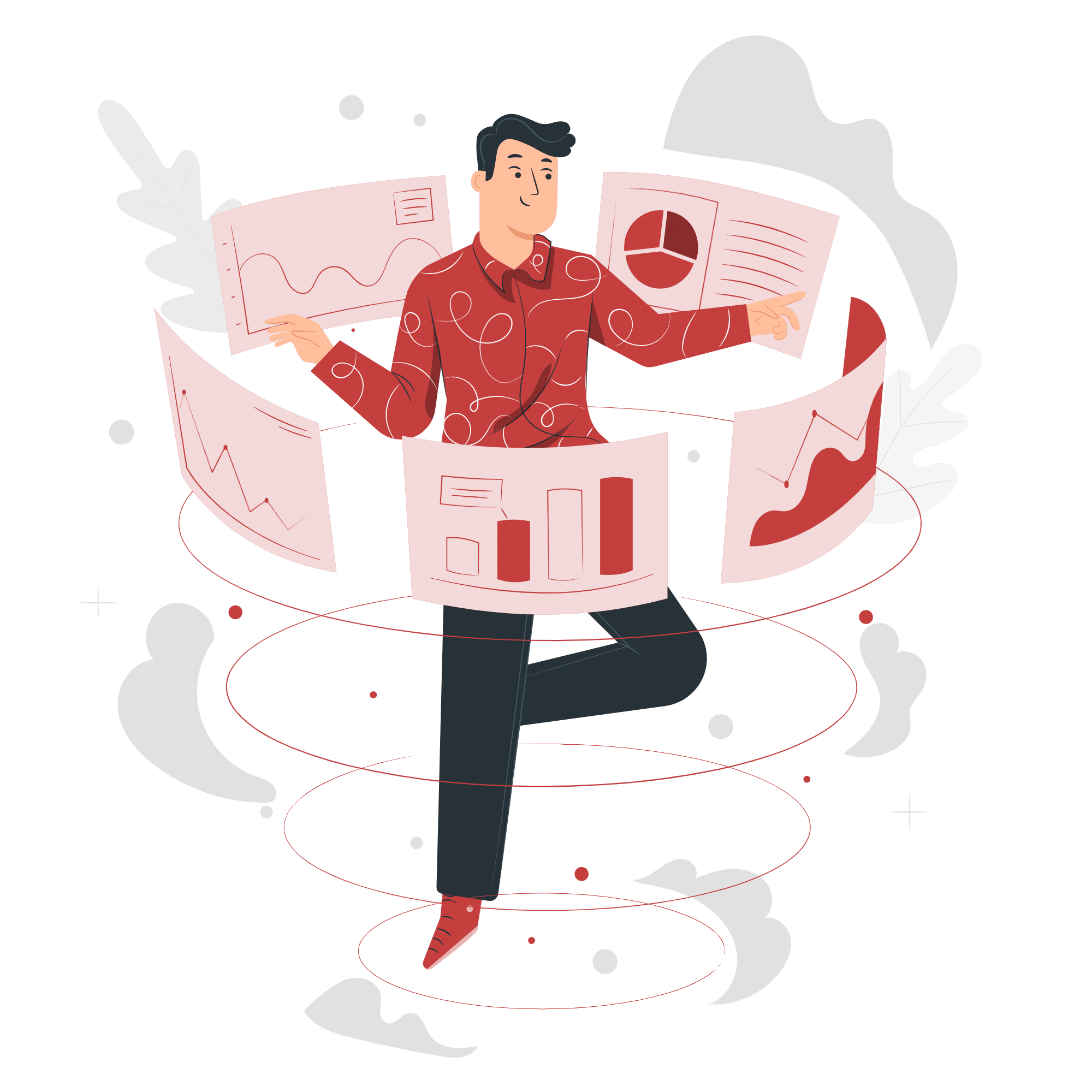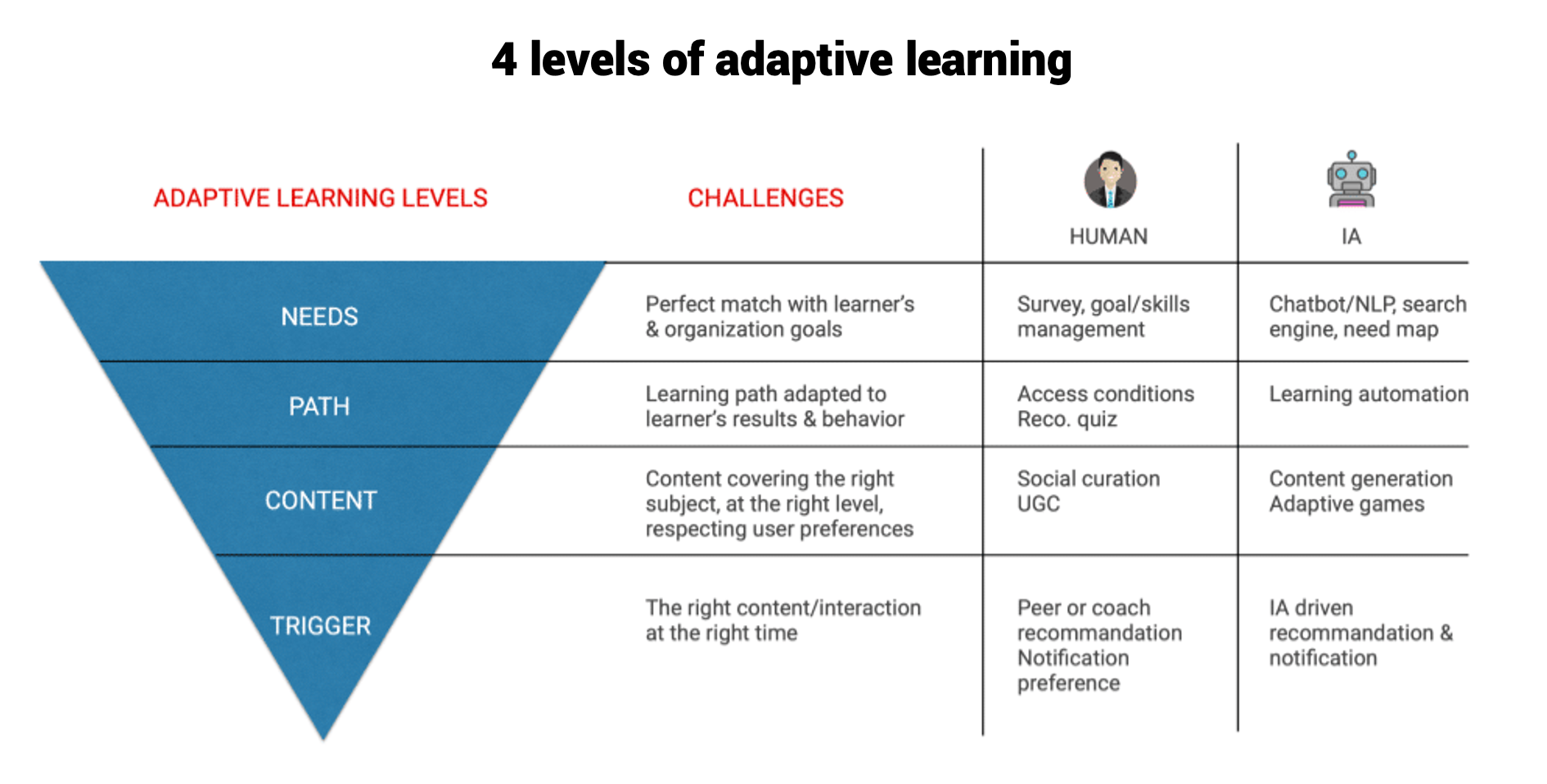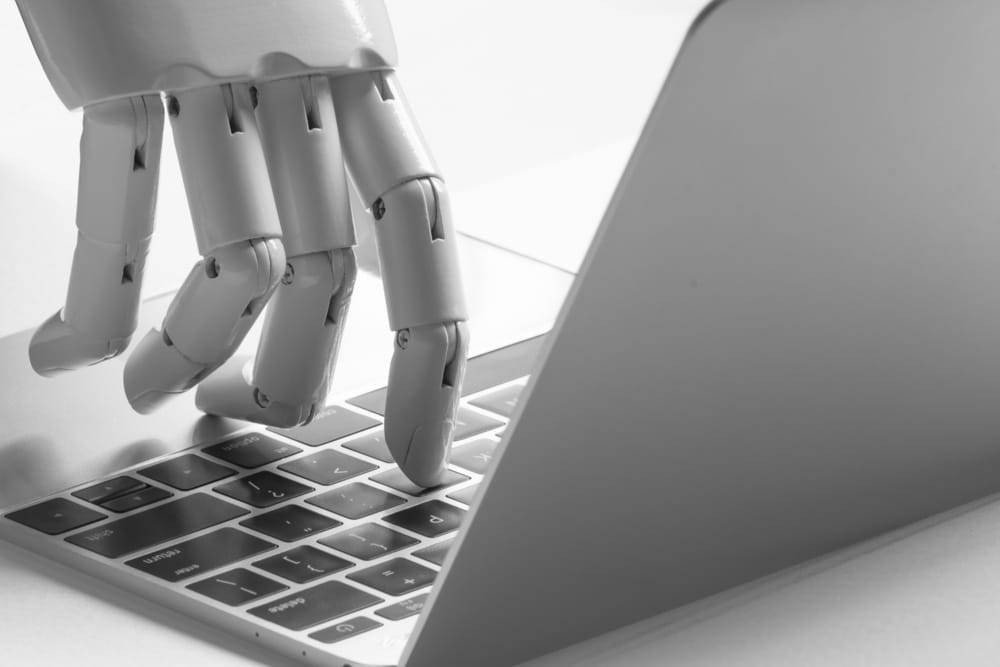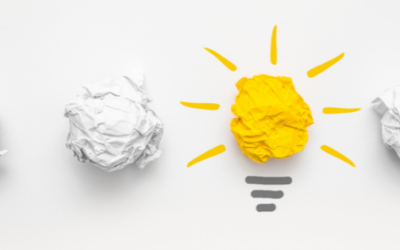Definition: the aim of Adaptive Learning is to provide each learner with a personalised learning pathway. The pathway takes into account the person’s qualities, weaknesses, habits and goals. The pathway adapts in real time to the learner’s activity and constantly adjusts in accordance with their performance and interest.
Adaptive learning uses artificial intelligence to actively adapt content to each individual’s needs. It draws on domains as diverse as machine learning, cognitive science, predictive analysis and education theory to turn this learner-centric vision of pedagogy into a reality.
When we think “Adaptive Learning”, we generally think of Artificial Intelligence (AI), but it can also be provided by means of human intervention (trainer, coach, manager, etc.).
Challenges associated with adaptive learning
Adaptive Learning addresses multidimensional challenges and for each challenge, offers a range of possibilities to achieve greater pedagogical efficacy, better learner engagement and greater company agility.
-
Pedagogical efficacy:
The purpose of pedagogical efficacy is to optimise learning using several adaptive levers. To this end, it must offer the right content at the right time: for example, by adapting to the learner and their rhythm, or by sending them a notification prompting them to learn.
-
Learner engagement:
Thanks to more personalised training, which better meets their needs, learner engagement is maximised. This “on demand” concept is also used by household-name platforms (Spotify, Netflix, etc.).
-
Company agility and performance:
By addressing the need for training and by offering the most adapted content to the right employee populations, the organisation benefits from greater performance and maximised agility.

4 levels of Adaptive Learning
There are 4 levels of adaptative learning, from the most general to the most specific:
1) Level of needs
This helps to determine the needs of individuals and organisations in order to suggest and recommend the most relevant content.
Artificial Intelligence can be used to make chatbots available to your employees. These chatbots seek more details by asking employees questions to articulate their needs. Thanks to the information supplied, you can contextualise their request and tailor the response given.
You can analyse search queries using natural language processing (NLP). Thanks to this analysis, you can map needs.
You can also offer a set of actions without using AI:
– Qualitative and quantitative satisfaction surveys.
– A ritualised interview campaign: quarterly or annually.
– Polls linked to your skills frameworks.
2) The pathway (macro-adaptive)
Undoubtedly the most prominent, training pathways must be optimally tailored to the learner’s results and behaviours. Therefore, even with similar content, the path the learner will follow will be unique and will depend on their level or needs.
From an AI perspective, here we refer to all the notions of prescription thanks, for example, to algorithms.
At this level, designers have a range of possibilities available to them:
– Conditions for accessing modules: “to access module 2, you need to pass module 1”.
– Quizzes or recommendation questionnaires which make learning conditional on a certain level or interest.
3) Content (micro-adaptive)
Is the content tailored to the learner? Is the difficulty level right? In this context, the content is customised and unique to each learner, depending on their progress and choice.
Artificial Intelligence is starting to offer automation systems for content creation (Learning Chatbot). This helps to create content to accommodate specific needs, but also throughout the entire knowledge evaluation phase (Quiz Learning Chatbot).
A fundamental point about Adaptive Learning arises from content generation by learners themselves (UGC, User Generated Content). Indeed, from a “human” point of view, UGC addresses and adapts to the most practical needs, hence the keen interest over the last few years in social learning.
4) The trigger
Learning invitations are sent at the right time, this means truly adapting to the learner’s rhythm. AI is capable of analysing connection and use habits and can therefore pinpoint times which are most likely to engage learners.
From a trainer’s or a coach’s perspective, knowledge comes from the learner’s need, in tune with their activities. The pair can therefore recommend the best content at the best time for the learner.


D’abord éditrice de manuels scolaires, professeure et coordinatrice pédagogique à l’Université, Julia a rejoint l’équipe Learning Experience chez Teach on Mars pour apporter ses compétences en pédagogie. La gamification et la différenciation pédagogique sont notamment ses chevaux de bataille.




![[Press Release] LumApps announces the acquisition of Teach on Mars, the leader in microlearning in Europe](https://www.teachonmars.com/wp-content/uploads/2023/12/✅-1-400x250.png)